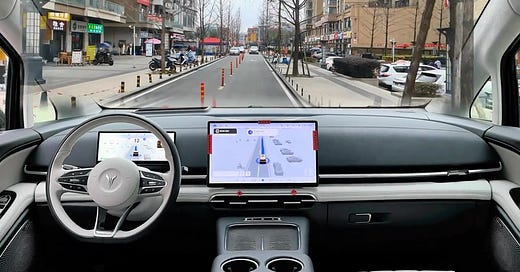2025年はスマートカー業界の分岐点となり、高度な自動運転競争は、L3の実現に向けて責任を担う自動車メーカー同士の争いにシフトします。これが自動車企業の新たな洗牌危機(業界再編)を引き起こすかどうかはまだ分かりませんが、サプライヤーにとっては、より厳しい淘汰戦が待ち受けていることは確実です。車両電子アーキテクチャの集中化が進む中で、伝統的な自動車電子サプライチェーンはさらに縮小していくでしょう。今後のクロスドメイン融合時代において、スマート化されたコアサプライチェーンのプレイヤー数はますます少なくなると予測されます。
タイミングや競争などの複数の次元から考えると、自動車メーカーは、出荷規模があり、車載経験が豊富で、海外展開能力のある半導体サプライヤーを選ぶ傾向にあります。なぜなら、半導体産業は他の産業よりもはるかに高い生産能力投資コストと期間が必要であり、価格競争に苦しんでいる自動車企業は、迅速な市場対応能力を持つチップサプライヤーに対して強い期待を寄せているからです。
そのため、「舱泊一体」や「舱行泊一体」などの高度に統合された計算プラットフォームは、開発時間とコストの削減を支援できるため、大多数のスマートカーの必需品となりつつあります。
「インテリジェントコクピットと自動運転の境界が曖昧になり融合しています。‘舱行泊一体’はプラットフォームの統合度を効果的に高め、システムコストを削減できます。これは自動車メーカーがコスト削減と効率向上を実現するための優れたアプローチとなるでしょう。」
クロスドメイン融合の高性能SoC分野では、高効率、高コストパフォーマンス、設計方案、柔軟性などの強みを持つ企業が、英偉達(NVIDIA)、クアルコム(Qualcomm)などの伝統的なチップメーカーによってすでに占められているコクピットやADAS市場において、次の競争段階で加速的に先行するチャンスがあると予見されます。
2025 will be a watershed year for the smart vehicle industry. The competition for advanced autonomous driving will shift towards the L3 implementation battle, with responsibility resting on the OEMs. Whether this will lead to a new round of reshuffling crisis for car manufacturers remains to be seen, but it is a foreseeable fact that suppliers will face even harsher elimination battles. Along with the centralized evolution of vehicle electronic architectures, the traditional automotive electronics supply chain will further consolidate. In the future era of cross-domain integration, the number of core players in the smart supply chain will only continue to decrease.
Considering various factors like timing and competition, automakers are more likely to choose chip suppliers with large shipment volumes, extensive in-car experience, and overseas deployment capabilities. This is because the semiconductor industry has far higher production capacity investment costs and timelines than other industries. Car manufacturers, caught in the price war, clearly expect their chip suppliers to have fast market response capabilities.
As a result, highly integrated computing platforms like "Cockpit-Parking Integration" and "Cockpit-Driving-Parking Integration" are gradually becoming essential for most smart vehicles, as they help OEMs save on development time and costs.
"The boundary between intelligent cockpit and autonomous driving is becoming increasingly blurred and integrated. 'Cockpit-Driving-Parking Integration' can effectively improve platform integration and reduce system costs, which will be a great approach for OEMs to reduce costs and increase efficiency."
In the cross-domain integration of high-performance SoCs, companies with advantages in efficiency, cost-effectiveness, design solutions, and flexibility will have the opportunity to accelerate and gain an edge in the cockpit and ADAS markets, which have already been dominated by traditional chip manufacturers like Nvidia and Qualcomm, moving into the next stage of competition.












Share this post